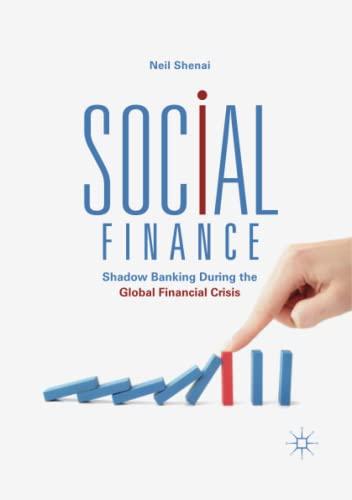Question
I hope the answer be complate and clear with everting Fitness Plus: Expansion Fitness Plus is thoroughly investigating the option of opening a new facility
I hope the answer be complate and clear with everting
Fitness Plus: Expansion
Fitness Plus is thoroughly investigating the option of opening a new facility in the city centre. Doing so would be an aggressive capacity expansion strategy, opening up new markets when competition is increasing at the original facility. This strategy would enable Fitness Plus to expand its market area, but may not help the overcrowding at the current facility. There are several uncertainties as to future costs, customer demands, and the strategies of competitors. It will also take some time to bring the new capacity on line. However, the resurgence in activity in the city centre makes this option worth careful analysis. Fitness Plus can lease a facility at 8 per square foot at a new city centre location. It would be very accessible to the new offices and businesses that are moving back into the city centre. The plot available is sufficiently large to handle a full service club comparable in size with the original facility, with ample room for parking. It would probably take about one year before financing could be arranged, the workforce recruited and trained, and the facility open to customers. The new facility would have 8000 square feet, without further expansion. Either new, or used, Nautilus and cardiovascular equipment can be purchased for the new facility. Buying the full complement (54 machines) of equipment currently at the original facility would be 165,000 new, and only 75,000 used. However, there is a concern that a brand new facility furbished with used equipment would not project a good image, and that membership might be adversely affected. The initial investment in carpeting (and rubber matting just for the weight lifting area) would cost a total of 16 per square yard for the whole facility. Annual costs would include 140,000 for salaries and wages, 25,000 for insurance and liability, 7,000 for maintenance, and 20,000 for electricity. The facility should attract customers from a 6-mile radius. Membership fees would be 50 per month, with an additional 100 initiation fee in the first year. A juice bar and tanning beds can be added to bring in additional revenues. The juice bar can generate an added 12% of sales, tanning beds can add another 1% of sales. A tanning bed costs around 8,000 with a payback of just one year. Demand for the new facility can be low or high. If low, there would be 150 members in the first year of operation, and grow until reaching 500-member plateau in the 6th year. This level is the largest the leased facility can currently handle. If demand for the new facility is high, the membership would be 300 in the first year and could increase to 1000 in the 6th year (assuming sufficient capacity). If demand turns out to be this high, Fitness Plus has the option of having the leased facility expanded to 14,000 square feet. This expansion would accommodate a 1,000-person membership. If the expansion occurs before the facility is opened, the lease cost will increase only to 9 per square foot. If expansion occurs after the facility is opened, the leasing cost would jump to 15 per square foot once the expansion is finished. While the facility would not close down during this later expansion (which would affect revenues), construction costs would be disproportionately higher and thus the 15 leasing rate thereafter. A larger facility also means that annual costs would increase to 12,000 for maintenance, 205,000 for salaries and wages, 30,000 for insurance and liability, and 38,000 for electricity. There would also be the added investment of 10,500 in carpeting. The investment in equipment would also have to be increased from 54 to 110 machines to handle the larger demand. Management believes that the high-demand scenario is 60% likely, with the small demand estimates only 40% likely. It should be clear at the end of the first year of operation whether a high or low demand scenario is correct. Of course, if demand is low, the best decision might not be to expand but instead forego any increase in market share in the city centre area. The MARCS accelerated depreciation schedules would be used when estimating after-tax cash flows for any new capital investments in the facility and equipment. The income-tax rate, including all other applicable taxes would be 35%. This rate is based on the average corporation tax rate and business rate experienced by Fitness Plus over the past several years. Management is not sure what discount rate should be used, but generally expects a return on investment of at least 12%.
Questions
1 Which alternative seems best: a small expandable facility comparable to the original facility, which may might be expanded later, or a large facility at the outset? Combine notions of capacity planning with capital budgeting, decision trees, and computer spreadsheets to support your conclusions. List any reasonable assumptions that you make when doing your analysis. Any formulae/calculations used in a spreadsheet (or similar software) must be fully explained.
2 How sensitive are your conclusions to estimated probabilities for demand; and to the discount rate?
3 What qualitative factors bear on these two alternatives, and whether Fitness Plus should expand in the city centre at all
Step by Step Solution
There are 3 Steps involved in it
Step: 1

Get Instant Access to Expert-Tailored Solutions
See step-by-step solutions with expert insights and AI powered tools for academic success
Step: 2

Step: 3

Ace Your Homework with AI
Get the answers you need in no time with our AI-driven, step-by-step assistance
Get Started


